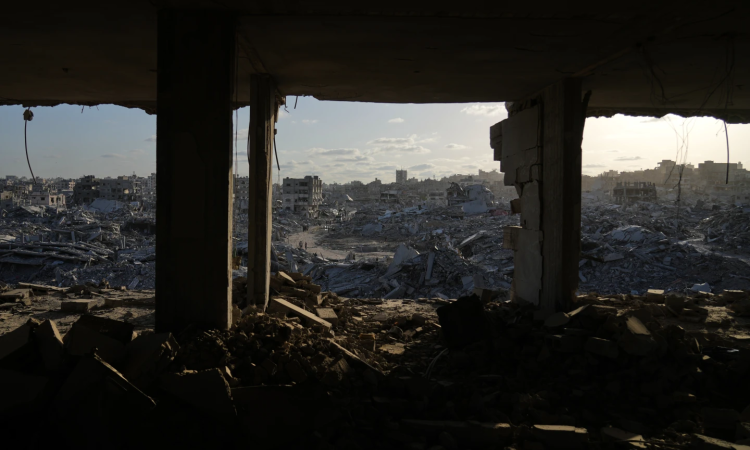Gaza: Peace on Israel's terms
The Palestinian Authority is an entity from the West Bank with no acceptance in Gaza. Its role in implementing the accord is written up to be largely spectatorial, and then conditional on it “reforming” itself to the satisfaction of Israel.

Representative Image
• Twenty-seven heads of state and government attended the signing of the Gaza peace agreement at Sharm el-Sheikh in Egypt on Monday, Oct. 13. The leaders of four mediating countries, US President Donald Trump, Egyptian President Abdel Fattah Al-Sisi, Turkish President Recep Tayyip Erdoğan, and Qatari Emir Sheikh Tamim bin Hamad Al Thani, signed on as guarantors of the deal.
However, two important parties were absent: Israeli Prime Minister Benjamin Netanyahu and Hamas, or any representative of the people of Gaza. Palestine Authority President Mahmoud Abbas was there, but only in a lame-duck capacity. The Palestinian Authority is an entity from the West Bank with no acceptance in Gaza. Its role in implementing the accord is written up to be largely spectatorial, and then conditional on it “reforming” itself to the satisfaction of Israel.
While Hamas was not invited, Netanyahu declined an invitation, citing a specious reason. Their absence raises doubts about whether the deal will get past the initial clauses of captive release and withdrawal to the ceasefire positions. The accord requires Hamas fighters to lay down their arms and leave the enclave. While Hamas did release its hostages on Monday, it has not yet agreed to disband or disarm unconditionally. Instead, it has turned on rival Palestinian groups within the enclave. On the other side, Israel has not yet pulled back to a ceasefire line—which is within Gaza for now—nor indicated that it will do so.
So, while jubilation over the release of hostages and prisoners and relief over the return of food convoys to Gaza are justified, it is not certain that the ceasefire will lead to any sort of peace in Gaza. The fact remains that this is a peace dictated to a starving people and a deal made in the absence of one party to the conflict. Furthermore, the captive exchange and ceasefire parts of the deal were attempted before, in January 2025. Then, too, Hamas had agreed to release all its captives, but it was Israel that reneged on proceeding to stage 2 of the ceasefire deal. What Netanyahu gained during this interregnum, besides taking thousands more lives, is a question lost in the triumphalism of Sharm el-Sheikh.
What’s new in the deal signed on Monday is the post-ceasefire part of it. Once, and if, the hostilities cease and Hamas fighters leave, Gaza will essentially become a mandate of the sponsors of Israel, namely the US and Western Europe, with some undefined Palestinian nominees, and later a fully “reformed” Palestine Authority, serving as the front. The proposed security arrangements are fuzzy: There will be simultaneous presence of three military forces in Gaza — Palestinian police, an international stabilisation force, and Israeli army — with the latter having a veto over everything.
If this arrangement achieves security, then the reconstruction part of the plan will commence, which is all Trump. Something called the Board of Peace will step in, with former UK Prime Minister Tony Blair playing an important role. Trump has self-effacingly declined to be the chair of this board, but reconstruction will be entrusted to a consortium of American and European capitalists.
What about the two-state solution? There was total silence on it at Sharm el-Sheikh, from all the European leaders who recently spoke so movingly about it, and of course from Trump himself. With Hamas decimated, the Palestine Authority enervated, and Arab leaders looking away, that leaves Netanyahu as the only man with a say on the matter.



